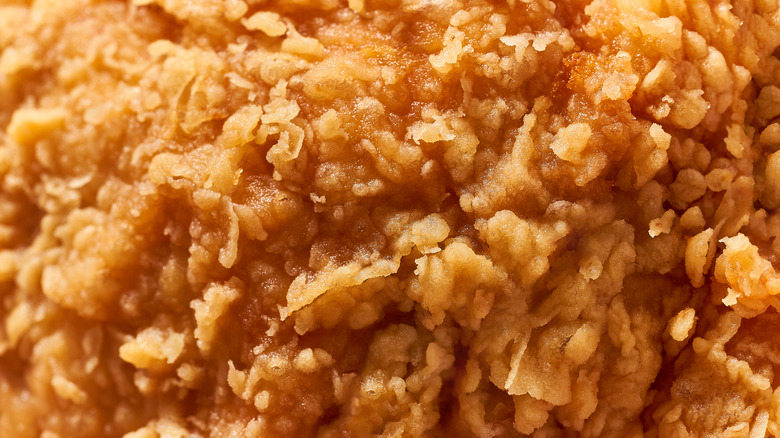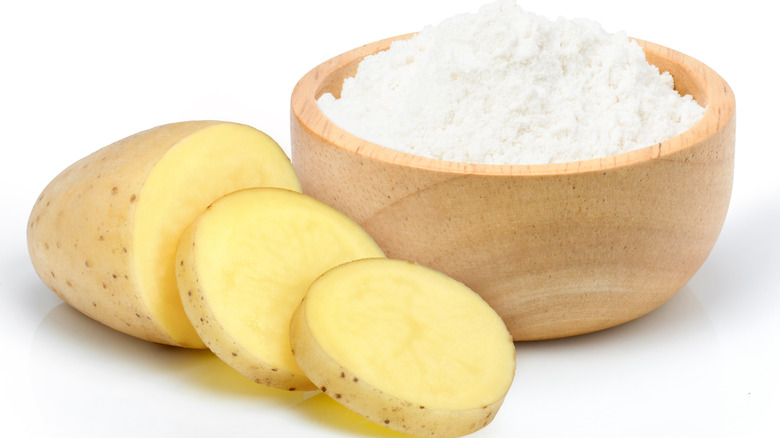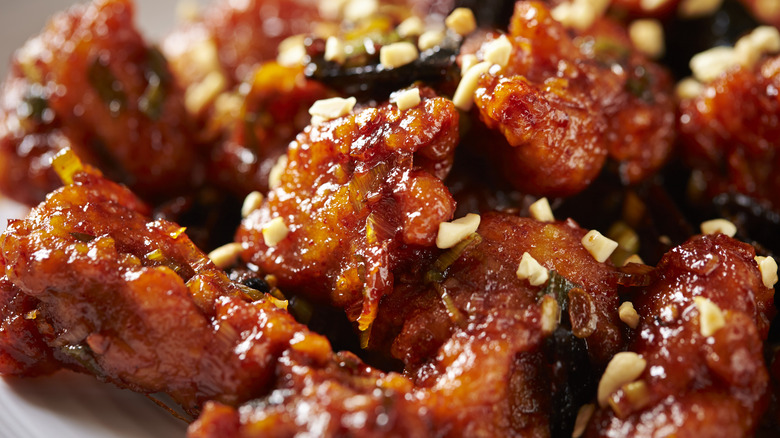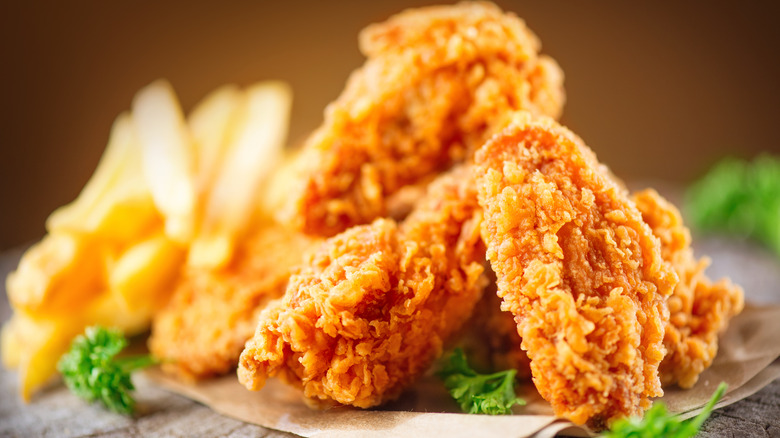Potato Starch Is The Secret To Getting The Crunchiest Batter-Fried Chicken
There are plenty of explanations for why humans love eating chicken. It's affordable, widely available, and has a mild flavor and agreeable texture that lends itself to an array of cooking methods and dishes. National Chicken Council reports that the average American consumes nearly a hundred pounds of chicken each year, and that number is expected to grow. Fried chicken, which BBC reports to have gained popularity in the Antebellum era of the southern United States, has since taken over world cuisine and culture.
Social media certainly whets our appetite and sets trends in motion, whether it's chicken and waffles to the "chicken sandwich wars" (per Restaurant Business) to TikTok Nashville hot chicken (per HANGAR12). Because of the endurance of the fried chicken craze, many home cooks are attempting to make it themselves. Fried chicken appears simplistic but there are ways to screw up fried chicken. BBC explains that the rendition popularized in the South is batter-coated and fried in oil until it develops that irresistible crunchy exterior. To achieve it, you'll need to call upon an ingredient you may already have in your pantry.
The secret's in the starch
So, what's in that bag of ambiguous powder? Medical News Today explains that starches are complex carbohydrates that plants use for the storage of energy and make up part of a healthy human diet. Potato starch is made by crushing raw potatoes (much less appealing than mashed potatoes) to free the starch molecules from the broken potato cells, Medical News Today adds. That starch is then dried to create a product similar to flour. What's that got to do with frying chicken? The starch helps keep the meat moist, promotes steady cooking, and ultimately builds the perfect golden crust, says America's Test Kitchen.
The real magic comes from the starch's interaction with the chicken and the oil. Grains of starch take in water from the chicken and the hot oil causes them to enlarge and dissipate, eventually creating a matrix that's holey but still holds together, America's Test Kitchen adds. Eaters translate this delicious science as crispiness. Furthermore, Lacademie says that potato starch is well-suited for the job due to its ability to withstand high temperatures and that it even has some meat tenderizing capability. To utilize potato starch, The New York Times suggests dredging your chicken in a mixture of starch, salt, and pepper. You want a light coating only to avoid soggy, doughy, or underdone chicken.
Batter up and fry away with your fried chicken
Now that you know the culinary science behind the potato starch used in fried chicken, you're on your way to creating not only Southern-style fried chicken but also Korean fried chicken, Japanese karaage, fried fish and shrimp, and tons more of crispy, greasy goodness. Although fried foods have a reputation for being unhealthy, this can be addressed by eating them in moderation and choosing the right oil.
Southern Living states that peanut oil is traditional, but olive oil, avocado oil, coconut oil, and grassfed ghee, tallow, and lard — with their healthy fats and high smoke points — are also great options, per Healthline. It's best to avoid oils with a lot of polyunsaturated fat, including soybean, canola, and sunflower oil as they oxidize during cooking, Healthline adds — and protein- and carb-rich butter just burns, so it's not good for deep frying.
Other tips for the best fried chicken at home
If you're ready to fry chicken to your heart's content, remember that the batter is just one of many important details that demand your attention. Southern Living warns cooks not to overlook the brining process, writing that a tablespoon of salt per three quarts of water is sufficient to help make the chicken more tender and flavorful. Other choices include classic buttermilk for fried chicken or even pickle juice for a fried chicken sandwich or kimchi liquid for your fried chicken. It's best to let the meat brine for at least eight hours, Southern Living adds — and rinse off the brine before cooking.
Afterward, make sure you pay close attention to the temperature of your oil, don't crowd the pan, fry the chicken twice, and let it rest on a wire rack (not wet, steamy paper towels) for the homemade potato starch-coated fried chicken of your dreams.



